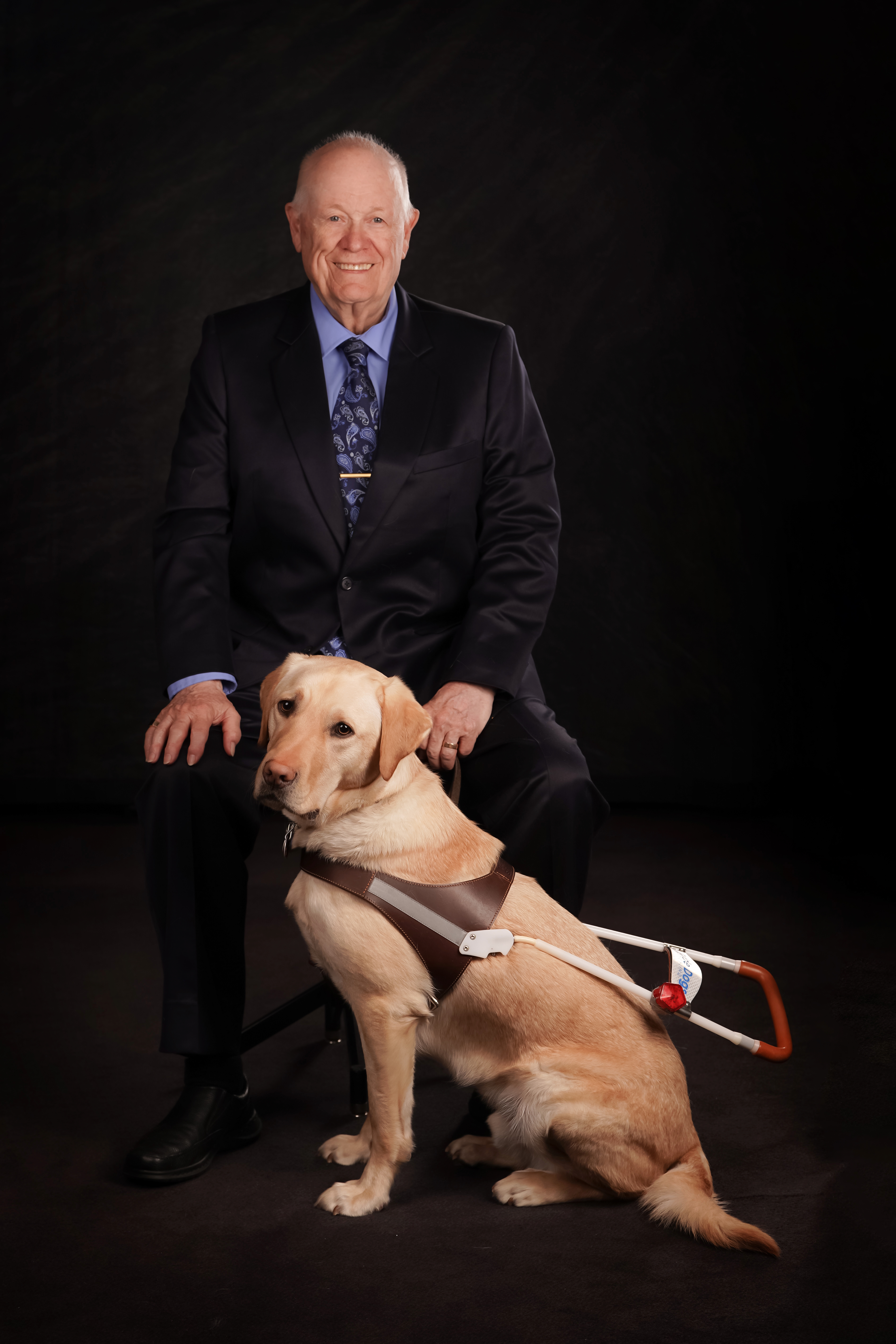Dr. Charles Mossop knows what it means to face a future clouded by uncertainty—and what it took to overcome the many obstacles placed in his path. Through his planned gift to TRU, he hopes to remove similar barriers for future students.
There are endless reasons to leave a planned gift. Dr. Mossop agreed to share his. What is yours?
In 1964, AS A SECOND-YEAR UNDERGRADUATE STUDENT AT THE UNIVERSITY OF BRITISH COLUMBIA, I was diagnosed with Stargardt’s Macular Dystrophy, a rare, incurable retinal condition causing the progressive loss of central vision leaving only limited peripheral eyesight.
From then on, my life comprised of challenges I never imagined I would have to face. As my sight began to deteriorate, my reading speed slowed dramatically, blackboards were obscured and library searches became extremely arduous, but with the support of the Canadian National Institute for the Blind (CNIB), I earned a master’s degree in 1969 in the cultural anthropology and history of China, one of the requirements of which was the study of spoken and written Mandarin Chinese. At that time, hand-held magnifiers of various kinds were almost the only assistive tools available.
As I looked for work after graduation, I encountered the centuries-old traditional prejudice surrounding sight loss; the conviction that if a person’s eyesight was poor, they were unemployable because there were no jobs they could do.
My ambition was to teach at a B.C. community college and I heard Cariboo College, opening in September 1970, was interested in hiring a sinologist—China being much in the news at that time. On Aug. 1, without making mention of my disability, I took a position as an anthropology instructor at Cariboo College, a post I held for the next 13 years. Thanks to many new-found coping skills and the use of hand-held magnifiers I became a successful teacher, relying on large, hand-printed notes and memory when delivering my lectures.

By the late 1970s, I could no longer read any normal print, but in 1981 I managed to obtain on loan from the Ministry of Education one of the newly developed desktop video magnifiers which provided the higher magnification I needed. This device increased my reading speed and greatly reduced eye fatigue. Then, in 1983, with a spirit of internationalism growing rapidly within the college system, I was offered the opportunity of establishing an international program to involve faculty members in development work. Projects were subsequently implemented in Indonesia, Nepal, Slovakia and elsewhere, funded by the Canadian government and the World Bank. By 1985, international student recruitment was added to the department’s responsibilities and expansion began. It was my privilege to run the department until my retirement in 2000, and I am proud to say I hired Baihua Chadwick, who is now VP International, as an international student advisor. And the rest is history!
My position required a great deal of travel, so I relied on hand-held magnifiers while overseas, but in the meantime, Cariboo College was computerizing; a process inaccessible to me until the early 1990s when the first screen magnification applications appeared. The institution then purchased a complete system for me, without which I could not have continued.
This brings me to my legacy gift to TRU. The growth in assistive technology for those with sight loss has been exponential since 2000. Screen magnification and screen reading applications are now more responsive and versatile than ever, small portable video magnifiers are now available, highly specialized assistive devices have proliferated and text-to-speech technology and artificial intelligence are transforming the way blind and partially sighted people read, learn and work.
I can only dream of what my life as a student would have been like if I had been able to use such technology. However, the technology is as expensive as it is miraculous, and thus it is my hope that my gift will be used, for example, to purchase adaptive software and assistive devices for loan to TRU students with sight loss who need but cannot afford them. Workstations with larger, non-portable video magnifiers and other devices might also be created for specialized research requirements or other specific purposes.
My goal is to help make the entire campus, its programs and facilities, fully accessible to anyone with sight loss. I envision a time when TRU might be known throughout the world as an institution that not only enrols students with sight loss, but understands their needs as well, provides support and welcomes them to a bright and promising future.
– Dr. Charles Mossop